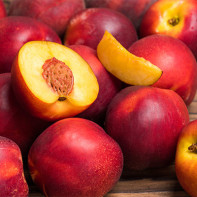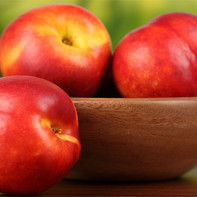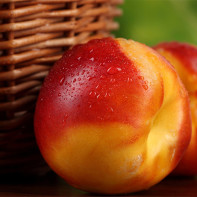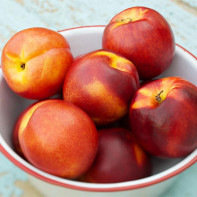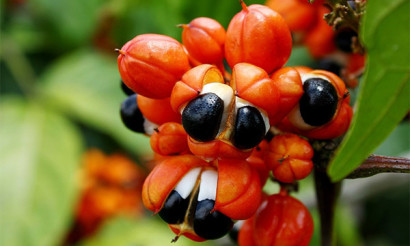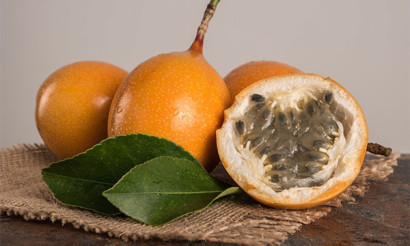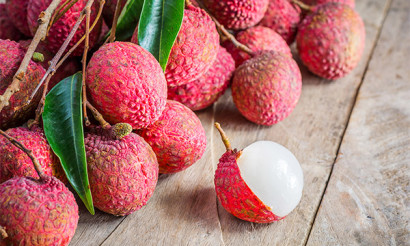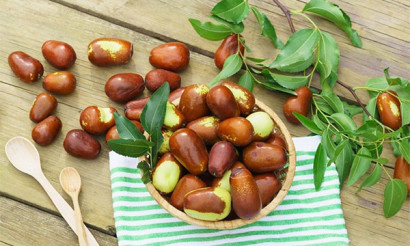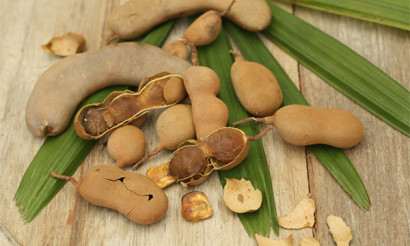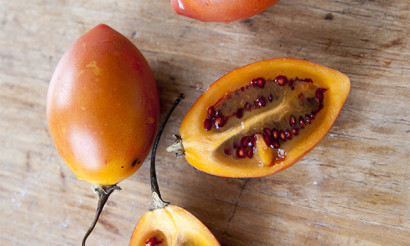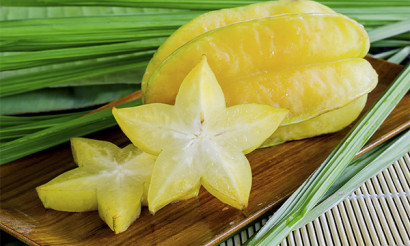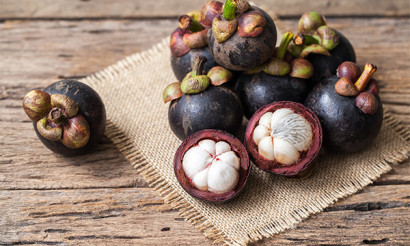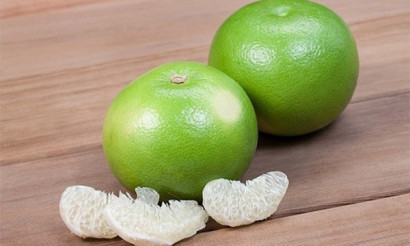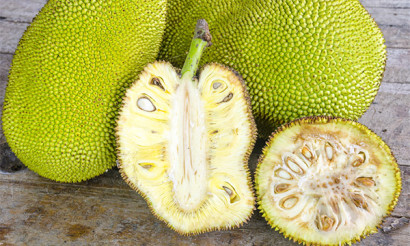Nectarine: health benefits and contraindications
Nectarine is one of the varieties of peach, which can be distinguished by a smoother peel. Many consider this fruit a kind of hybrid, the result of crossing different cultures. But this is not the case. The fruit, which comes mainly from Mediterranean countries, comes from China. And it belongs to the same genus as peaches.
- What is a nectarine.
- How it differs from the peach.
- Which is healthier: the nectarine or the peach
- Composition and calories
- What is Nectarine Good for?
- General benefits
- For Women
- For Men
- Pregnancy
- For breastfeeding
- For children
- Can I Eat Nectarines to Lose Weight?
- Nectarine Pips: Benefits and Harms
- Nectarine in medicine
- Diabetes
- Pancreatitis
- Gastritis
- For Intestines
- For constipation
- For gout
- For hemorrhoids
- Cholecystitis
- Cosmetic Applications
- Nectarine Face Mask
- Nectarine Juice Face Mask
- Nectarine for hair
- Harm and Contraindications
- Nectarine Allergy Symptoms
- How to Choose and Store Nectarines
- Can I Freeze?
- Can I Dry?
- How to Eat Nectarine Properly
- How much can I eat per day?
- Can I Eat at Night and on an empty stomach?
- Can I Eat Nectarine Pips?
- Recipes for making with nectarines
- Jam
- Jam
- Ice Cream
- Compote
- Wine
- Juice
- Smoothie
- Pastila
- Candied fruit
- Can I Give Nectarines to Animals
- Interesting facts about nectarines
What is Nectarine
The holo-fruit peach, as this fruit is also called, contains a large amount of nectar, hence its name. You may see red, yellow, or white nectarines. The flesh is easily separated from the seed, but if the fruit is overripe, this can be difficult.
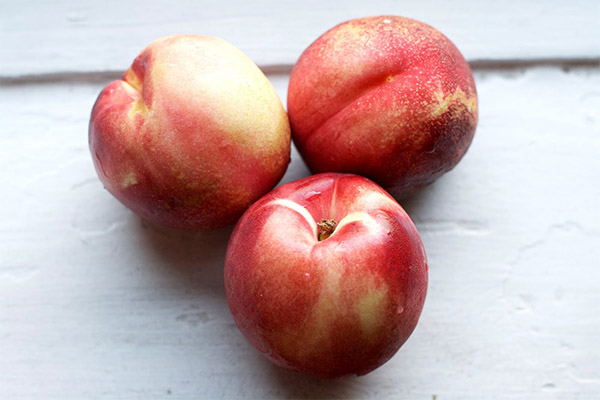
Many folk herbalists are well aware of the healing properties of nectarines. It contains fewer sugars than can be obtained from its nectarine counterpart. The fruit is rich in pectin, a shocking dose of ascorbic acid, as well as phosphorus, iron and potassium, so necessary for the human body. Nectarines are even considered a prophylactic food for the development of tumors.
What is different from a peach
The main distinguishing feature is the smooth skin. The size of the fruit is almost similar to a peach, and nectarines can sometimes grow on a peach tree.
Sugar content is less, but the mineral composition is very rich.
Which is healthier: the nectarine or the peach
In terms of composition, the two fruits are almost identical. But in terms of immunity benefits, nectarines are healthier because they contain almost twice as much ascorbic acid and a slightly higher concentration of vitamin A, potassium and phosphorus.
Composition and calories
There are only 48 kcal per 100 grams of fruit pulp. However, the macronutrient composition is 0.9 g of protein, 0.2 g of fat and 11.8 g of carbohydrates.
Nectarines also contain:
- manganese, iron, iodine, zinc and phosphorus;
- formic, ascorbic, malic, citric and folic acids;
- vitamins A, C, PP and K;
- polysaccharides;
- fiber and pectin;
- Essential amino acids (riboflavin, thiamin, tocopherol).
What is good for nectarines
General benefits
Thanks to its rich composition, the fruit is a vitamin and mineral bomb for the body. It serves as an excellent general tonic for a healthy body, as well as a booster during illness.
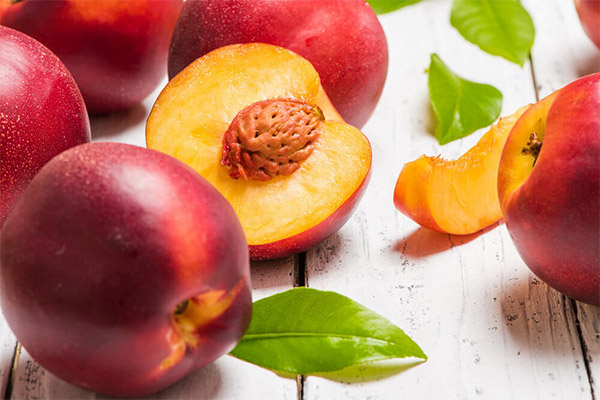
Due to the pectin fiber, nectarines have a beneficial effect on peristalsis in the intestines, stabilize digestion, and normalize the balance of nutrient transfer.
The fiber contained in the fruit keeps the feeling of fullness for a long time, so nectarines fit perfectly into a dietary menu.
The fruit is also useful because:
- is a preventive product to prevent the development of atherosclerosis and hypertension;
- strengthens the enamel of teeth;
- increases hemoglobin in the blood;
- improves hair, nails and skin;
- promotes muscle growth;
- acts on the nervous system as an antidepressant;
- promotes relaxation and stress relief on a par with chocolate and oranges.
Nectarines will be beneficial:
- For increased physical exertion. The fruit can boost performance and help avoid nervous exhaustion.
- To support the tone of the heart muscle and keep the rhythm of its contractions at a physiological level.
- To strengthen vascular walls.
- As a preventive measure to avoid arthritis, gout and to keep the youthfulness of the joints.
- To burn fat and achieve satiety on the background of low caloric intake in weight loss and correction diets.
- As an aid to boost immunity and resistance to the exhausts of the big city.
- To maintain the motility of the gastrointestinal tract at the proper level, as well as for difficult defecation and dysbacteriosis.
- For the removal of toxins and waste products.
For women
Nectarine is called the fruit of female beauty. It not only saturates the body of fragile ladies with all the useful substances, but also supports it in conditions of increased stress. Vitamins support the water balance in skin cells, thanks to which it is possible to maintain beauty and youthfulness.
Zinc paired with folic acid, which is necessary for the female body, allows you to keep not only the overall tone, but also the metabolic processes at the most active level.
Nectarine can be considered useful for women also because it serves as a stabilizer of hormonal function, on which directly depends on youth.
For men
The stronger sex will also need the support of this miraculous fruit. Its composition will support the immune system at the proper level, help reduce the degree of stress, increase concentration and strength in the muscles.
When pregnant
The future mother and fetus will only benefit from the use of nectarines. Many women in the position note that a few slices of the fruit can save from an attack of heartburn and some manifestations of toxicity. In addition, nectarines are a rich source of vitamins and minerals. In addition, folic acid from this product contributes to the normal development of the child's nervous system.
Pregnant women prone to allergies should exercise caution, and at the slightest manifestation of a reaction to the use of the sweet fruit to exclude it from the diet.
When breastfeeding
Breastfeeding mothers should better refrain from eating nectarines in the first 2 months of the baby's life. Since the fruit can cause difficulties in the passage of food through the intestines, the delicacy should be postponed. Introduce it to the diet gradually, one slice at a time, carefully observing the reaction of the newborn during the day.
For children
Pediatricians recommend feeding nectarines to babies from 7 months, not earlier. At first you can give your baby a few drops of freshly squeezed juice, and after a few days, provided that the body is well accepted, move on to feeding the sweet puree.
Warning! Before serving nectarines to children, you need to peel the fruit from the skin.
Since the fruit has a mild laxative effect, its use can solve stool problems in infants. Juice is recommended by pediatricians as an immunomodulatory agent of natural origin.
Is it possible to eat nectarine when losing weight
Nutritionists recommend including the fruit in the menu. It provides the sweetness that thin people lack, in addition, it maintains the feeling of satiety and well quenches thirst.
Nectarines help to compensate for the lack of nutrients, which invariably occurs in conditions of a restricted diet, normalize protein metabolism and break down fat deposits. Thanks to the dietary fiber it is easier to get rid of toxins and excrete toxins, and the diuretic and choleretic effect of the fruit helps quickly and naturally get rid of breakdown products.
By stimulating the production of digestive juices, nectarines are a tasty aid in dieting, digestion and digestion. For maximum digestive benefits, the fruit is recommended to be consumed after the main meal.
Nectarine pips: benefits and harms
As with peach seeds, the kernels of this fruit should be treated with caution. They can accumulate a lot of hydrocyanic acid, which is formed regardless of environmental factors during the ripening of the fruit.
Despite the fact that the insides of nectarine pips are a bit bitter, many people like to eat them. However, it is important to keep in mind the possible harm and not to exceed the dose of 10 kernels per day.
Nectarines in medicine
Despite the fact that the juicy fruit is a unique source of useful substances, it should be consumed with caution by people with health problems.
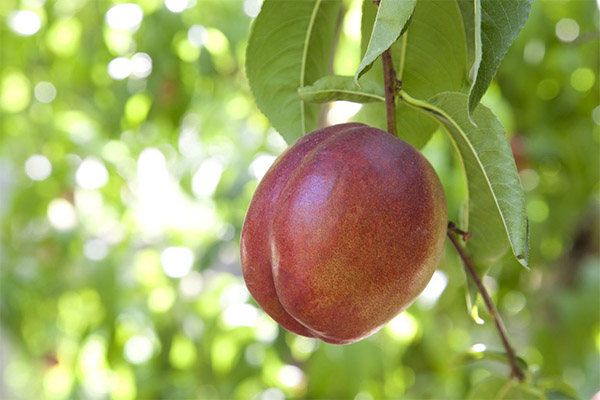
In case of diabetes.
Nectarine has a fairly high glycemic index (42) and contains sucrose and fructose. Therefore, those with suspected diabetes should consult a doctor before enjoying the fruit. People with a chronic form of diabetes should not eat nectarines.
For pancreatitis
This disease requires a careful attitude to its diet. The permissibility of eating nectarines depends on the severity of the disease, so its introduction into the diet should be discussed with your doctor.
If there is a ban on sweet and sour fruit, nectarines should also be avoided.
Gastritis
In the latent course of the disease, the fruit can be an aid in digestion. But in acute forms of the disease, nectarines should not be eaten.
For the gut
The juicy brother of the peach is an excellent aid to the intestines. It not only improves the contractility, but also acts as a kind of "brush", which sweeps out all the toxins and buildup from the walls of the excretory system.
For constipation
Nectarine has a slight laxative effect, so when you have problems with stool or digestive motility, it is worth to include it in the menu. The only caveat is that you should not eat the fruit at night, as it can make sleep restless due to the activation of digestion.
In case of gout
Nectarines can give a lot to sick joints, from saturation with essential micronutrients to the return of mobility. The fruit also helps break down salt deposits and remove excess sodium, so they can be used to ease the course of the disease.
In hemorrhoids.
This type of inflammation leads to difficulty in defecation. Eating nectarines will help ease the process. People with hypersensitivity should use these fruits with caution to avoid aggravation of inflamed nodules.
For cholecystitis.
You should introduce nectarines into the diet only after consulting your doctor.
Cosmetic applications
Nectarine masks have a miraculous effect. Many cosmetologists point out their miraculous rejuvenating properties and positive effects on the skin and hair.
Nectarine face mask
This cosmetic will be a great helper to maintain youthfulness of the skin in the height of the nectarine season.
To prepare it you will need:
- about 5 fruits;
- Peach oil (5 tablespoons).
Rinse the fruit under running water, remove the seeds and grind into a puree with a blender or food processor. Add oil and mix by hand.
Before applying the mask prepare the face: wash with water at room temperature and wipe the skin with a tonic. After that, distribute the mask on the face and leave it for 15-20 minutes. Rinse off with cool water, and the final step can be a wash with thermal water.
Face mask with nectarine juice
For the preparation you will need:
- freshly squeezed juice of 1 fruit;
- corn starch (1 tablespoon);
- Protein of 1 egg.
Mix the ingredients and apply to cleansed skin for a quarter of an hour. Wash off the rest of the mask with room temperature water. This recipe is suitable for removing traces of rashes, pigment spots and fine expression lines.
Nectarines for hair
Juicy fruit perfectly nourishes the hair, saturating them with a vitamin cocktail and helping to restore the structure.
To prepare the mask will require:
- pulp of 1 fruit;
- Lean cottage cheese (2 Tbsp.).
Mix the components, apply to the scalp, and then distribute over the entire length. Exposure time of the mask - at least 45 minutes. This type of care, when applied regularly at least once a week, helps to accelerate hair growth and repair damaged ends.
Harms and contraindications
Strict contraindications to the use of the fruit can include diabetes, a tendency to allergic reactions to fruit acids, as well as excessive body weight. Individual intolerance of peaches and nectarines should be avoided.
If you exceed the amount eaten in a day, which is up to 5 nectarines per day, you may experience adverse reactions such as:
- bloating;
- Digestive distress;
- Abnormal changes in blood sugar concentrations.
For children under 7 years of age, the consumption of the fruit should be limited to 1-2 pieces per day.
Nectarine allergy symptoms
The classic manifestation of an allergic reaction to a fellow peach is a red rash on visible parts of the body - face, stomach, legs, forearms and hands. If symptoms are detected, you should take an antihistamine and see a doctor. With strong and rapidly developing reactions, accompanied by swelling of the mucous membranes, you should immediately call an ambulance, before the arrival of which try to give the victim an anti-allergic drug.
How to choose and store nectarines
The nectarine season begins in May and ends in September or early October. The most useful and juicy fruits are considered to be those that hit the shelves in July and August. Fruits with a pleasant aroma and skin of bright color are the most suitable for eating and contain the maximum amount of useful substances.
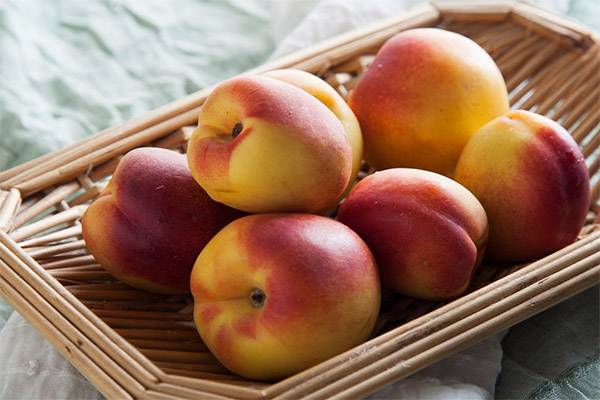
Do not pick fruit that is wrinkled, as this can indicate the onset of spoilage. The nectarine shell should be firm and yield to minimal deformation when lightly pressed.
The ripe fruit can be kept in the refrigerator, but this period should not exceed 4-5 days.
If you bought a few unripe fruits, their ripening process can be accelerated. You have to pierce the nectarine a few times with a toothpick and put it in a paper bag with an apple for a few hours. If after this time the fruit has not ripened, the bag should be set aside for a few days, checking the process every day. Store ripe nectarines at room temperature.
Can you freeze
Unripe fruit should not be stored in the refrigerator - it will spoil. You should also not buy a large quantity of nectarines at once, since they can only be stored for around five days.
If you cut the ripe fruit into slices and remove the pips, you can freeze them. The slices are stored spread in a single layer in a freezer bag for no more than 3 months.
Can they be dried?
Nectarines can be made for the winter by drying them in an oven or a special drier for fruit. The drying process does not tolerate haste, slices or thin slices should be dried in layers.
How to eat nectarines right
The juicy fruit is one of the favorite delicacies of many. The fruit can be eaten raw, baked and boiled.
According to the rules of etiquette, you should eat 1 nectarine at a time, placing it in the center of the plate. The skin should be removed with a knife, and then the fruit should be sliced one by one into small pieces, starting at the top.
In fact, most people choose nectarines precisely because they can be eaten with the peel.
How much you can eat a day
Nutritionists recommend not eating more than four fruits a day. In order to get the most benefit from the fruit, it should be consumed a few minutes before the main meal of 1 fruit. The best time is in the first half of the day, when the body is maximum tuned to absorb nutrients.
The speed of digestion of the fruit depends on the age and general condition of the person, but on average it takes about 2.5 hours.
Nutrition experts recommend eating nectarines in season. They can be eaten raw, but should be washed.
In fresh form, the fruit is used not only as an independent dish, a component of salads and desserts. Nectarine is excellent with chicken, duck and pork meat, as well as with ham and seafood.
Dairy products such as low-fat yogurt, cottage cheese and ice cream are considered the most compatible with the fruit in terms of diet.
A slice of nectarine can be added to tea instead of lemon. Also fragrant compotes, smoothies and jam are made from the fruit. And baked goods with these fruits have a unique taste and smell.
Can I Eat Nectarines at Night and on an empty stomach?
Nectarine can and should be eaten on an empty stomach. It helps to stimulate the digestive system to work and facilitates the absorption of nutrients from subsequent meals.
You can also consume the fruit at bedtime. It not only allows you to get full by consuming a small number of calories, but it also quenches your thirst well.
Can you eat the seeds?
It is allowed to consume the kernels of the seeds in small quantities. However, they are not suitable for long-term storage, because they are saturated with decay products that are toxic to the human body.
What can be made of nectarines: recipes
Jam
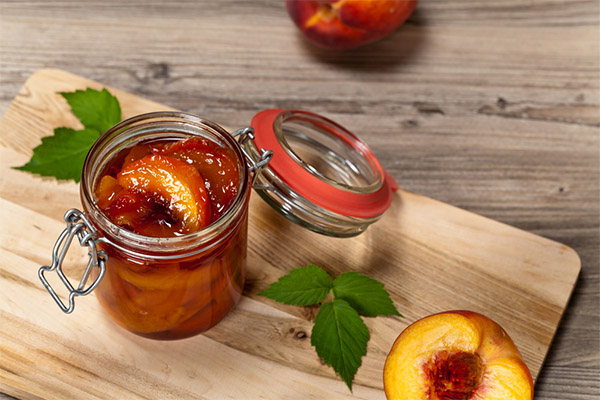
For the preparation you will need:
- nectarine (8 pcs.);
- sugar (1 cup).
Cut the fruit into small cubes, put it in a saucepan, pour sugar and cook over low heat for about 15 minutes. The consistency of the finished jam is gentle.
Jam
Ingredients:
- Nectarines of medium size (1.5 kg);
- sugar (1 kg);
- lemon (1 piece);
- vanilla powder (1 bag).
After washing, free the fruit from the pips and cut into pieces of arbitrary shape. Lemon squeeze, 1/4 of the remaining zest put in gauze.
Put sliced nectarines in a cooking pot, add sugar and lemon juice. Place a piece of lemon zest tied in gauze on top, so that it stays on top. Put the mass in the refrigerator under a closed lid overnight.
If in the morning the fruit will give away about a cup of juice, it should be separated and boiled separately until it thickens a little. Then pour this juice back into the mass, and put them to boil over low heat until the consistency is similar to jam. After the mass has cooled, it can be further chopped with a blender.
Ice Cream
Components:
- Any nonfat yogurt (6 tbsp.);
- Nectarine peeled from the skin (1 pc.)
- honey (1 tsp.);
- Berries or other fruits as desired.
Purée the fruit with a blender, add the rest of the ingredients and mix. After cooling in the freezer for 1-2 hours the ice cream is ready to eat.
Compote .
To prepare it you will need:
- small in size nectarines (0.5 kg);
- water (1 l);
- sugar (300 g);
- 1.5 l jars.
The fruits should be selected so that they easily fit into the jar. If in the process of making compote will need more water, it is worth adding sugar additionally.
The fruit should be washed and inspected for damage. For canned compote, whole fruits are suitable. You can cut nectarines in half. Then place them in jars. In case they are closed whole, you should fill about 2/3 of the container, and if the halves - 1/2.
Pour the nectarines with steep boiling water, let them infuse under a covered lid, presterilized. After 15 minutes, pour the liquid into a saucepan, add a small amount of boiling water and add the sugar. Bring the syrup to a boil and simmer for a few more minutes.
Then take the syrup off the stove and pour it over the nectarines in jars. Roll up and put on lids until it cools. Store the canned compote in a cool room with limited access to daylight. Drink the drink within a year.
Wine
Strong aromatic alcoholic drink from nectarines stands out for its yellow color and unique mild taste. The technology of making wine is similar to making a drink from peaches, the only difference is the mass fraction of dry matter, which depends on the original fruit.
Fruits should be picked ripe and undamaged, as even a small spoiled area on one of the fruits can impair the taste of the drink.
In order to prevent mold particles from getting into the wort, which may be residual on the fruit, all tools for cooking should be treated with boiling water and wiped dry with a clean towel. Hands should also be washed.
To make the wine you will need:
- nectarines (5 kg);
- sugar (1,5 kg);
- water (2 liters);
- Starter or wine yeast (at the rate of 7 liters of wort);
- citric acid (25 g, you can replace it with the juice of 6 fresh lemons).
Process:
- Free the fruit from the pips, crush the pulp with your hands along with the skin. Put the mass in an enameled container (metal is not allowed to use). For this purpose, suit a pot or bucket.
- Add syrup to the fruit, made from water and 0.5 kg of sugar. Next, add citric acid and sourdough. After mixing the container cover with gauze and put in a dark place for 3 days. The storage temperature of the mass should be room temperature. In order not to sour the must, it should be stirred every 10 hours with a wooden stick or by hand, touching the bottom.
- Twenty-four hours after nectarines have been fermented, you should see signs that fermentation has begun - a distinctive smell, effervescence and froth. This will indicate that the process is correct.
- After 3 days, strain the must through gauze, folded in several layers, squeeze the cake and dispose of. After filtering add 0.5 kg of sugar and stir it.
- Fill 4/5 of the fermenting wort (there has to be space for foam and carbon dioxide bubbles). Install a water seal on the neck (you can use a medical glove with a small puncture with a thin needle).
- For optimum fermentation process the container should be placed in a darkened place with a constant temperature of about 22-25 ° C. When the glove inflates, it means the beginning of the active fermentation phase.
- After 5 days, add 250 grams of sugar to the must, which should be dissolved in a small amount (about 0.5 liters) of drained must.
- On average, it takes 35 to 50 days to ripen the wine. The readiness of the wine can be judged by the deflated glove, clarification of the liquid and sediment at the bottom.
- The resulting wine should be drained, leaving the sediment in the fermentation tank, and then add sugar to taste.
Juice
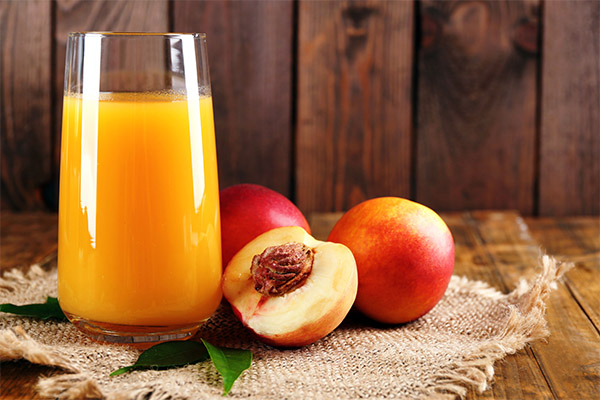
Children and adults love nectarine juice with pulp. To make it, you will need:
- nectarines (1 kg);
- water (0.5 liters);
- sugar (100 gr);
- Citric acid (pinch).
Hold the fruit one by one in boiling water, then transfer it to ice water. These manipulations will help to easily peel the fruit from the skin. Next, remove the pips, crush the pulp and add the remaining ingredients.
Smoothie
A popular combination of nectarines with nonfat kefir is popular among thinners. Such a smoothie can replace or complement one of the meals.
To prepare it, you will need:
- nectarine (2 pcs.);
- Kefir 1% (1 cup);
- sugar (2 tablespoons, on a diet you can replace honey).
Dice the fruit, add the other components and mix with a blender. Smoothie should be drunk freshly made, this drink is not intended for long storage.
Pastila
This treat will be tasty for children and their parents. It is completely natural and contains no harmful components, and its caloric value is 145 kcal per 100 grams of product.
To prepare marshmallow for 4 people will be required:
- nectarines (1 kg);
- honey (1 tbsp.);
- Citric acid (on the tip of a knife);
- ground nutmeg and cardamom (1 tsp. each);
- powdered sugar for decoration.
Process:
- Wash fruit, free from pips and skin. Chop the pulp and season with honey. With a blender, beat the mass into a puree, add spices and acid.
- The resulting mass is placed on a baking sheet on a baking tray. To avoid sticking, grease the paper with any unscented vegetable oil. The layer of mashed potatoes for cooking should be thin (no more than 7 mm).
- Pastila can be dried in the sun, in which case the entire process will take about 2 days. You can speed cooking in an oven heated to 100 ° C, bake with the door open until ready.
- When ready, remove the marshmallow from the baking tray, lay it out with the paper upside down. Moisten the surface with water, wait a few minutes and remove the paper. Cut the ready pastry into strips and roll up, which you can secure with food rope.
From the indicated amount of ingredients you get about 300 grams of product. Store the finished marshmallow under room conditions in a tightly closed container.
Candied fruit .
A tasty and healthy treat is prepared from:
- nectarines (1 kg);
- granulated sugar (1 kg);
- water (0,5 kg);
- citric acid (pinch).
Wash the fruit, cut into slices. Remove the skin, for this you can put the fruit for 1-2 minutes in boiling water. You need a syrup, which is prepared by mixing 0.7 kg of sugar with acid and water. Boil the solution and add the fruit. Boil for a few minutes and then remove from the heat. Repeat this procedure 3-4 times. Then strain the fruit, put it on a paper towel and let it dry for 12-24 hours. You can speed up the procedure in a special drying cabinet. Finish the preparation only when the candied fruits will be completely dry.
Store the finished product in a closed container, glass containers are more suitable for this purpose.
Can we give nectarines to pets?
In small quantities, this fruit will be useful for pets. But if the pet is getting acquainted with the fruit for the first time, it is worth to observe its reaction for a day. Small amounts of peaches and nectarines are usually good for pets.
Interesting facts about nectarines
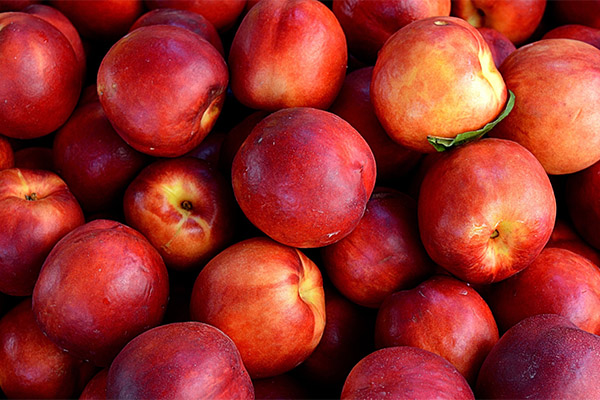
- The consumption of 2 fruits per day satisfies the need for vitamin C by 100%.
- The hydrocyanic acid contained in the kernels of the fruit kernels is the strongest poison.
- The nectarine was named after the ritual drink of the gods of Ancient Greece because of its sweetness and delicate flavor.
- The fruit is native to China, but the world leader in its supply is the countries of Southern Europe. In some latitudes of Russia also managed to cultivate nectarines.
- Many languages do not have different names for peaches and nectarines, these concepts are considered synonymous. But in English literature you can find a mention of nectarines specifically, dating back to 1616.
«Important: All information on this site is provided for informational purposes only information on this site is provided solely for educational purposes. Before using any recommendations, you should consult with a health care professional. specialist before using any of the recommendations. Neither the editors nor the authors shall be liable for any possible harm caused by materials."

